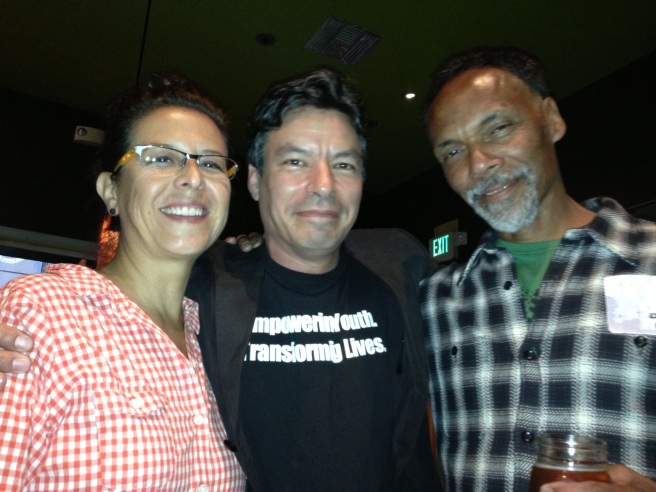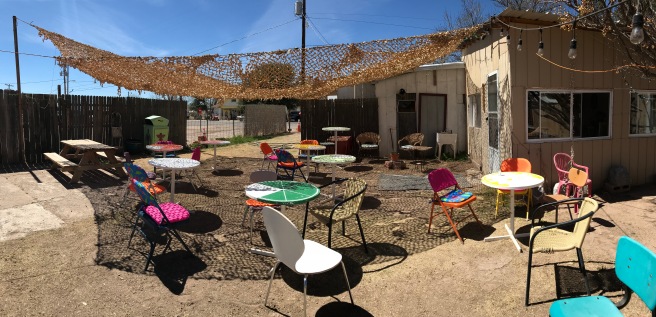The 950 Market Street Project had on-site affordable for-sale units as part of its original program. The price points were $187,298 for a studio, $209,355 for a one-bedroom and $231,651 for a two-bedroom. While the number of on-site homeownership would be less than off-site rental — a legitimate disadvantage given the city’s extreme shortage — we would have had a mixed-income project with homes accessible to moderate-income households like, for example, the teachers, nurses and hotel workers at 83 McAllister.
One Tenderloin affordable housing organization argued that the buyers of these on-site affordable units were: “Not our people.” That’s too bad, in my view, as well as ignorant, intolerant, and xenophobic. What’s wrong with housing teachers, nurses, hospitality workers and their families?
Cynics critical of nonprofits might say that “Our People” are any they can profit from. The on-site affordable units meant no money for the local nonprofit affordable housing groups, whereas the off-site affordable project will direct millions of dollars into the hands of the groups who objected to affordable housing for nurses, teachers and their families.
But why did we have to choose between on-site and off-site affordable? A city not hostile to housing development would have found a way to leverage the developer’s investment of $370 million so we could have achieved both, not to mention more permanently affordable arts space. New York City, for example, would have leveraged the developer’s project with 33% more buildable space in exchange for more affordable units (or arts space).
Why don’t we leverage to build more affordable units in San Francisco? It’s my understanding Home-SF, championed by Supervisor Katy Tang, is an attempt to do so. That program was not in place yet for 950, though it would not have mattered if it was. The director of a local housing clinic, Randy Shaw, threatened to sue the project if it went over the zoned height limit, regardless if the height/density bonus produced additional affordable housing units. This limited the project to be consistent with the height of the Warfield Theatre and other structures built for a city that existed one hundred years ago.
This struck me as odd: A reputed champion of affordable housing — or at least affordable 8×10 rooms — threatening to sue a project or put it on a ballot, despite the creation of more affordable housing. But, as I later learned, Mr. Shaw was also a champion of local downzoning, and protecting downzoning is endemic to historic preservation advocates in San Francisco. It’s no secret that historic preservation is often a major deterrent to the development of affordable housing.
I also wondered: Who would pay for Mr. Shaw’s lawsuit against the project? As the housing clinic is a publicly-funded organization, presumably you and I would pay for the lawsuit, which meant we the people would be lobbying against affordable housing production. Ironic.

Richard DeLeon’s “Left Coast City: Progressive Politics in San Francisco, 1975-1991.” and Kim-Mai Cutler’s fascinating “How Burrowing Owls Lead To Vomiting Anarchists (Or SF’s Housing Crisis Explained)” are both excellent resources for understanding this dynamic.
My takeaway from reading DeLeon, Cutler, and following local housing news: If faced with the choice to build more affordable housing/more affordable program space by building taller and denser, most politically active San Franciscans will oppose the affordable housing/space. This stems from a) a long-standing fear of the city becoming the long-dreaded west coast Manhattan, and b) most San Franciscans are housing secure, and care more about potential threats (more people) — real or perceived — to their existing housing and charming village-like lifestyle.
Both of these concerns are understandable. It’s certainly true, in my view, that an entire cityscape of truly awful high-rises went up during the downtown building boom era, so fears of destroying what’s left of the city’s beauty are reasonable from that perspective. And the downzoning of the Tenderloin protected many low-income people, or at least the buildings they lived in. But that was true a generation ago; now, in 2018, it resulted in a stunted project that could have created over a hundred more units of housing, or 40,000 square feet of permanently affordable arts program space, or some combination of both.
It’s unfortunate our choice seems limited to historic preservation of a 19th century fishing village or high-rise Manhattan. At least that’s how it often plays out in our discourses.
Local control, in the case of the Tenderloin/Mid-Market, has exacerbated polarization. Supervisor Kim’s local control method awards powerful nonprofits at the expense of the small and weak. The Kim method awards politicians that profit, figuratively and literally, from securing favors, financial and political, from whomever wins the face-offs. And vice-versa.
More specifically, in 950, local control resulted in the arts, youth development, affordable housing, a pair of fraudulent individuals demanding five million dollars, and social services all squaring off. I was involved because of my years of work with the local youth and arts organizations. The only reason the arts and youth development — two historically disenfranchised Tenderloin constituencies — were at the table at all was because the developer, who had strong community ties, insisted they be included. The housing clinic went so far as to try to dissuade the youth groups from talking to the developer. A “950 Coalition” consisting of a couple of guys who are regulars at all Tenderloin meetings purported to speak for the entire neighborhood. There wasn’t an Asian, Latino, African-American, Yemenese, or any youth in sight; in a group claiming to represent the Tenderloin. Supervisor Kim’s leadership seemed to consist of gauging which group offered her the highest potential political dividend – including the fraudulent extortionists, who were “connected” to voters and money she wanted.
Is this what we want? Pay-to-Play is as old as politics certainly, and likely all the mayoral candidates do it, but what I witnessed with Supervisor Kim’s opportunistic handling of the 950 Project was especially disturbing.
Here’s another specific example. At one point during the entitlement process, the housing clinic spearheaded an attempt to eliminate a small arts nonprofit from the community space. A “community organizer” even authored a letter to this effect, signed “All the Residents and Staff of the Housing Clinic, TNDC, and Hospitality House.” This claim, of course, was a complete farce, and one of the most glaring examples of misrepresentation of a community I have ever seen. Fortunately the developer didn’t surrender and abandon their partnership with the nonprofit arts organization.
These local skirmishes are arguably small stuff. In the end, what truly mattered was that city hall was off the hook. It was under no pressure to leverage private sector investment. San Francisco is matching the 950 Market Street developer’s 370 million dollars with zero. Zero. In one of the richest cities on the planet: zero. In an area that has suffered from disinvestment for decades and whose people have endured an astronomically high rate of concentrated extreme poverty, San Francisco offers zero. We should have had both on-site and off-site affordable housing, and/or a permanently affordable space for arts education and human development.
Years ago I told the 5 Blocks documentary crew that San Francisco doesn’t know how to do development. I was wrong: it’s not that we don’t know how, it’s that we don’t want to. Perhaps we should just be honest and openly say we accept this to avoid the alternative: Building housing for more people we don’t want coming to the city.
From my own experience, low and moderate income people don’t care about more density or more height; they would accept both in a heartbeat in exchange for a more affordable city. They also don’t care about all the historic plaques; they’d trade a thousand of them to have their own toilet. But they’re not very politically active, mostly because they’re too busy with the struggles of daily life. Their spokespersons, unfortunately, routinely misrepresent their views and interests.
Community Benefit Agreements produce tangible and positive benefits. But they are fundamentally limiting, favor the powerful — sometimes powerful nonprofits can be what disenfranchises a community — and give the city a free pass when it should be matching developers investments with real resources, financial and otherwise. CBAs should complement, not supersede, the city’s match. If we had a city match to what the city has made off the tech boom, we would have a far more equitable landscape. But the city kicked up its heels while we settled instead for elbowing each other for Community Benefit Agreements and demonstrations in front of Google buses. Clearly, the passengers of those buses are “Not our people.” As it turns out, neither are their teachers or nurses.









